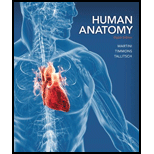
Match each numbered item with the most closely related lettered item.
interstitial endocrine cells........
To review:
Match the term interstitial endocrine cells with the most closely related descriptions given below:
Link from scrotal chamber to peritoneal cavity
Stem cells that produce sperm
Compartment of the scrotum containing a testis
Site of lactation
Flagellum
Inner layer of the uterine wall
Enlarged portion of the uterine tube
Important estrogen hormone
Responsible for the production of androgens
Layer of smooth muscle deep to the dermis of the scrotum
Introduction:
Interstitial cells are also known as Leydig cells. These cells are found in the testicles in males lying close to the seminiferous tubules. These cells are polyhedral in shape with a large nucleus. The nucleus in these cells have three prominent nucleoli along with darkly stained peripheral heterochromatin. These cells have numerous lipid filled vesicles in it.
Explanation of Solution
These cells produce androgens in males, which is responsible for developing primary as well as the secondary male characteristics during puberty. Testosterone is the male hormone (androgen), which is produced in the males.
Androgens are often associated with male hormones, but they are also found in small quantities in the females. Androgens are responsible for the production of estrogens in females as well as in the males. The interstitial cells produce the testosterone only in the presence of luteinizing hormone (LH) in males.
Therefore, it can be concluded that the interstitial endocrine cells can be correctly matched with option (i) responsible for the production of androgens.
Want to see more full solutions like this?
Chapter 27 Solutions
Human Anatomy (8th Edition) - Standalone book
- What is the structure and function of Eukaryotic cells, including their organelles? How are Eukaryotic cells different than Prokaryotic cells, in terms of evolution which form of the cell might have came first? How do Eukaryotic cells become malignant (cancerous)?arrow_forwardWhat are the roles of DNA and proteins inside of the cell? What are the building blocks or molecular components of the DNA and proteins? How are proteins produced within the cell? What connection is there between DNA, proteins, and the cell cycle? What is the relationship between DNA, proteins, and Cancer?arrow_forwardWhy cells go through various types of cell division and how eukaryotic cells control cell growth through the cell cycle control system?arrow_forward
- In one paragraph show how atoms and they're structure are related to the structure of dna and proteins. Talk about what atoms are. what they're made of, why chemical bonding is important to DNA?arrow_forwardWhat are the structure and properties of atoms and chemical bonds (especially how they relate to DNA and proteins).arrow_forwardThe Sentinel Cell: Nature’s Answer to Cancer?arrow_forward
- Molecular Biology Question You are working to characterize a novel protein in mice. Analysis shows that high levels of the primary transcript that codes for this protein are found in tissue from the brain, muscle, liver, and pancreas. However, an antibody that recognizes the C-terminal portion of the protein indicates that the protein is present in brain, muscle, and liver, but not in the pancreas. What is the most likely explanation for this result?arrow_forwardMolecular Biology Explain/discuss how “slow stop” and “quick/fast stop” mutants wereused to identify different protein involved in DNA replication in E. coli.arrow_forwardMolecular Biology Question A gene that codes for a protein was removed from a eukaryotic cell and inserted into a prokaryotic cell. Although the gene was successfully transcribed and translated, it produced a different protein than it produced in the eukaryotic cell. What is the most likely explanation?arrow_forward
 Human Physiology: From Cells to Systems (MindTap ...BiologyISBN:9781285866932Author:Lauralee SherwoodPublisher:Cengage Learning
Human Physiology: From Cells to Systems (MindTap ...BiologyISBN:9781285866932Author:Lauralee SherwoodPublisher:Cengage Learning Principles Of Radiographic Imaging: An Art And A ...Health & NutritionISBN:9781337711067Author:Richard R. Carlton, Arlene M. Adler, Vesna BalacPublisher:Cengage Learning
Principles Of Radiographic Imaging: An Art And A ...Health & NutritionISBN:9781337711067Author:Richard R. Carlton, Arlene M. Adler, Vesna BalacPublisher:Cengage Learning
 Biology (MindTap Course List)BiologyISBN:9781337392938Author:Eldra Solomon, Charles Martin, Diana W. Martin, Linda R. BergPublisher:Cengage Learning
Biology (MindTap Course List)BiologyISBN:9781337392938Author:Eldra Solomon, Charles Martin, Diana W. Martin, Linda R. BergPublisher:Cengage Learning





